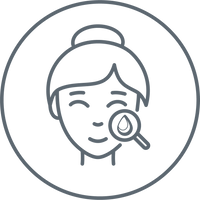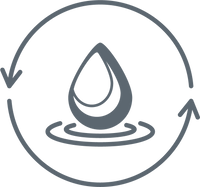Acne: Symptoms, Causes and Solutions
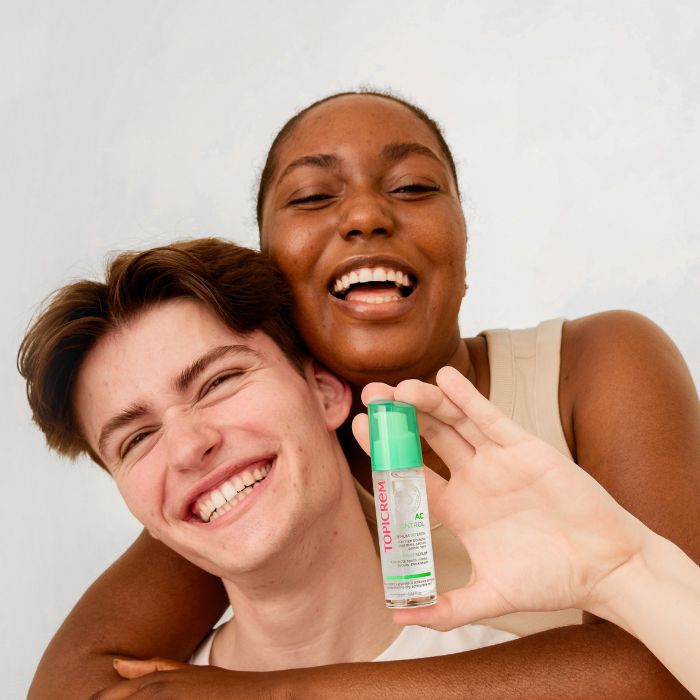
Topicrem celebrates its 30th anniversary!
0,00€
This is undoubtedly the most feared skin condition and also the number one reason for dermatological consultation. More or less pronounced depending on its severity, it is inevitably visible. Acne affects more than 85% of 12-24 year olds¹ , and also affects adult women and men. From lesions on the skin to painful sensations, its manifestations vary and can really affect your daily well-being.
In this article, we decipher the characteristics of acne-prone skin: its causes, its symptoms, the severity grades of acne, its impact on quality of life, but above all, the right actions to help you take care of daily for your skin, and feel better about yourself.
Acne is a skin condition characterized by inflammation of the oil glands and hair follicles. It is easily identified by the presence of visible pimples and comedones. Acne is generally associated with oily skin with shine.
Acne can take several forms:
If acne mainly appears during adolescence , it can also appear later, in adulthood . Around 85% of 12-24 year olds have acne, mostly in mild and moderate forms .
But acne can persist, or even reappear in adulthood, affecting around 8% of adults between 25 and 34 years old¹ .
It also happens that acne breakouts appear in adult women , around the age of 40² . Around 5% of women over 40 are affected by acne.
Discover our expert range of care for combination to oily skin prone to acne , AC CONTROL.

Depending on its severity and the importance of its symptoms, acne can significantly impact quality of life³ . People with acne-prone skin report a psychological impact leading to a drop in self-esteem (67% among adolescents compared to 45% among adolescents⁴), a deterioration of their body image, with the consequences of difficulties in their social lives and professionals.
For 25% of students, acne is a major problem⁴. Among adults, approximately 28.12% report feeling frustrated or embarrassed by acne⁵.
In some cases, acne may be associated with symptoms of depression and anxiety, as well as a decreased ability to concentrate on work or study.
If you have acne-prone skin, then you have certainly identified certain characteristic signs of acne such as:
Studies on acne-prone skin show that while acne is essentially of biological origin, certain lifestyle factors can accentuate the signs.

Acne results from the combination of 4 biological phenomena⁶:
Different hormonal fluctuations throughout life contribute to accentuating these phenomena, particularly during puberty , menstruation or pregnancy .

Our lifestyle and our environment can encourage the appearance of acne⁷.
Acne can take different forms, more or less severe, combining more or less visible and painful manifestations⁸.
It is characterized by the presence of comedones (blackheads and whiteheads). A few papules and pustules may be present. In this form, acne is rather localized , without significant inflammatory manifestation, rarely causing residual scars .
The skin has more papules and pustules . Its inflammatory response is more significant, which can promote the presence of nodules . In case of excessive manipulation of the visible signs, it is common for post-acne scars to appear.
The nodules and cysts are numerous, the subcutaneous inflammation is significant, with painful sensations . This form of acne usually spreads over large areas on the face, back and chest. The scars can be numerous and become permanent.
Identifying the severity grade of acne then allows us to determine the appropriate treatment and care procedures.
At the first signs of acne (pimples, redness, painful sensation, feeling of nodules and cysts under the fingers), it is recommended to consult a dermatologist . He will thus be able to identify the severity grade and define, with you, the necessary care , and if necessary, topical and/or oral dermatological treatments .
To take care of your acne-prone skin, it is essential to follow a good hygiene and skincare routine .

Start with a gentle cleansing of the skin morning and evening. To do this, choose cleansing products designed for oily, acne-prone skin . They will eliminate excess sebum and impurities without damaging the skin.
For your skincare routine, there are many cosmetic treatments designed for acne-prone skin. So opt for treatments that are non-comedogenic , and formulated with ingredients that meet the needs of acne-prone skin.
To help you find the right products, here are some criteria to prioritize:

Proper management of acne requires the advice of a professional such as a dermatologist. Once a diagnosis of the severity grade has been established, he will be able to prescribe the treatment best suited to your acne. Among the available options there are⁶:
On a daily basis, certain good practices can improve the symptoms of acne.
TOPICREM formulas have all been designed with the aim of providing protective hydration and preserving the skin barrier of sensitive skin for the whole family.
To do this, the laboratory relies on its expertise derived from pharmaceutical excellence:
Selection of high tolerance ingredients with proven effectiveness,
Development of clinically tested formulas on sensitive skin,
Effectiveness proven by science and approved by consumers.
Through the comfort and emotional well-being they provide, our treatments help you feel confident with your skin and with yourself, to better reveal yourself to others, and thus to fully enjoy every moment of life. .
Bibliographic references:
¹Burris, J., Rietkerk, W., & Woolf, K. (2013). Acne: the role of medical nutrition therapy. Journal of the Academy of Nutrition and Dietetics, 113 3, 416-30. https://doi.org/10.1016/j.jand.2012.11.016.
²Dawson, A., & Dellavalle, R. (2013). Acne vulgaris. BMJ: British Medical Journal, 346. https://doi.org/10.1136/bmj.f2634.
³Tanghetti, E., Kawata, A., Daniels, S., Yeomans, K., Burk, C., & Callender, V. (2014). Understanding the burden of adult female acne. The Journal of clinical and aesthetic dermatology, 7 2, 22-30.
⁴Tayel, K., Attia, M., Agamia, N. et al. Acne vulgaris: prevalence, severity, and impact on quality of life and self-esteem among Egyptian adolescents. J. Egypt. Audience. Health. Assoc. 95, 30 (2020). https://doi.org/10.1186/s42506-020-00056-9
⁵Nandy P, Shrivastava T (January 22, 2024) Exploring the Multifaceted Impact of Acne on Quality of Life and Well-Being. Cureus 16(1): e52727. doi:10.7759/cureus.52727
⁶Nogita, T., Nomura, Y., & Kurokawa, I. (2021). Postinflammatory Papule: An Attempt New Designation for Acne Vulgaris. Dermatology and Therapy, 11, 1867 - 1869. https://doi.org/10.1007/s13555-021-00629-2.
⁷Williams HC, Dellavalle RP, Garner S. Acne vulgaris. Lancet. 2012 Jan 28;379(9813):361-72. doi: 10.1016/S0140-6736(11)60321-8. Epub 2011 Aug 29. Erratum in: Lancet. 2012 Jan 28;379(9813):314. PMID: 21880356.
⁸Tan, J., Frey, M., Knezevic, S., Poulin, Y., Lynde, C., Gulliver, W., Gupta, A., Sebaldt, R., Thomas, D., & Sapra, S. (2015). The Relationship Between Dermatologist- and Patient-Reported Acne Severity Measures and Treatment Recommendations. Journal of Cutaneous Medicine and Surgery, 19, 464 - 469. https://doi.org/10.1177/1203475415576464.

In this article, we take stock of this type of skin: what is dry skin? What are the causes and fa...
Read the article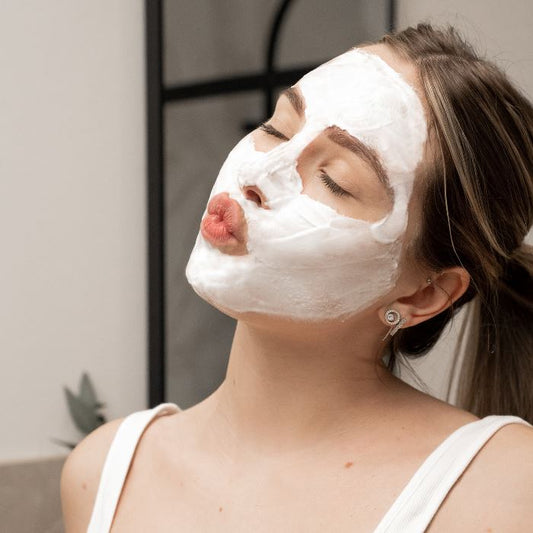
Adapt your beauty routine to your needs, and take the time to do yourself good!
Read the article
How to choose the right moisturizer for your skin type? Topicrem supports you in finding a pleasa...
Read the article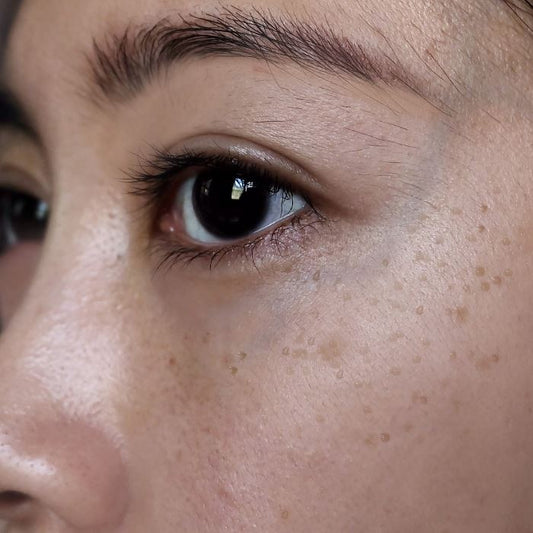
Skin pigmentation is the natural biological process of coloring our skin. When it is well regulat...
Read the article